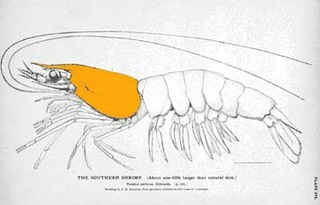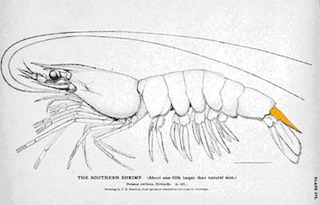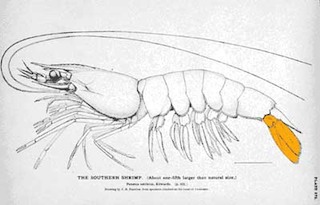So what specifically of the Decapods? Of their ten legs? They are the last five of the eight pairs of thoracic legs (thoracic appendages). The front three pairs of the eight thoracic appendages serve as mouthparts. They are called mandibles and/or maxillipeds. The remaining thoracic appendages are called pereiopods (more Latin and Greek tells you this means 'walking legs' or 'walking feet'). In the illustrations in this section the thorax (from which the thoracic appendages sprout) is the body segment covered by the carapace.
Nomenclature further varies when, as in the lobster and crayfish, decapods have highly enlarged pincers on one pair of legs (and may have smaller pincers on other legs). These claws are called chelae and the legs can therefore be termed 'chelipeds' (if used both for locomotion as well, it makes them equally chelipeds and pereiopods). If leg appendages are used for swimming (such as those on the abdomen of shrimp or prawns) then they are termed swimmerets or pleopods (swimmerets of course meaning swimming legs).
The telson is the final division of the body of a crustacean. It is not considered to be a true body segment because it does not form in the embryo in the same way as do real segments. The telson also does not have any appendages, although it may be split or forked to give that illusion at times. When this take place, it is called a caudal furca. The telson and the uropods collectively form the familiar fanned tail of crayfish, lobstes, shrimp and other decapods.
These tail fan of uropods and telson is integral to inducing the rapid movement in the so called 'lobstering' escape reaction which occurs when the tail is flexed very quickly. The tail fan acts as a large paddle, pushing against the water beneath the crustacean and causing the animal to dart rapidly and unexpectedly (the a predator) backwards. This 'lobstering' is extremely energetic and using lobstering krill can race backwards at speeds of nearly 1 m/sec.





